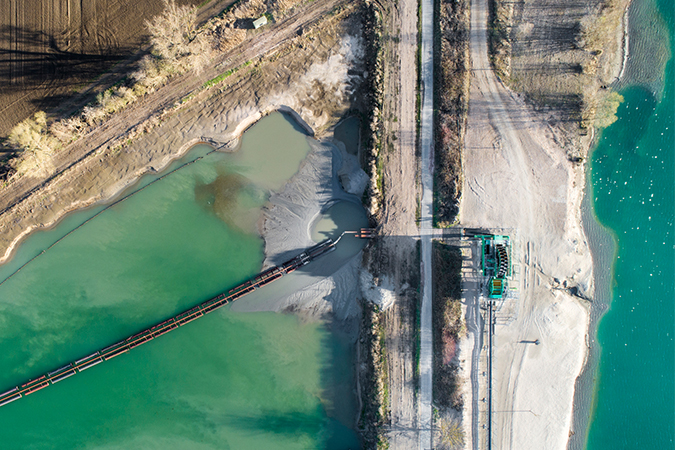
On the 25th of January, a tailings dam at Vale’s Corrego de Feijao mine burst. A wave of mud, iron ore and toxic chemicals was released into the valley below the dam, killing at least 206 people.
It was Brazil’s largest environmental disaster.
In addition to the deaths caused by the collapse, the mudflow destroyed 270 hectares of land, over half of which was native vegetation or protected forests. It has polluted over 300km of surrounding rivers, significantly impacting the water security of the people living around the dam.
Meanwhile, the operator’s chief executive resigned, multiple employees deemed culpable were arrested, and the company suffered the largest single day loss in the history of the Brazilian stock market. It’s value on Brazil’s B3 stock exchange fell $US19 billion.
However, while it captured international headlines, the ‘Brumadinho disaster’- as it was labelled in the media - was, in many ways, not an isolated incident.
Tailing dams like the one that failed at Brumadinho are common in the mining industry. They are constructed to form tailings ponds; huge basins, sometimes spanning square kilometres, used to store by-products from mining operations such as ground up rock and sand, as well as often toxic chemical reagents used to extract commodities.
The tailings dams themselves are often made up of similar waste materials and earth, and are often constructed in sequential ‘lifts’ as the tailings pond grows.
As a consequence, tailings dams have a failure rate significantly higher than conventional dams. In fact, the collapse at Brumadinho inherited its title as Brazil’s worst ever environmental disaster from another tailings dam failure at Mariana, in Eastern Brazil, which killed 19 people in November 2015.
The year before, a tailings dam at Mount Polley in British Colombia failed, releasing 4.5 million cubic litres of tailings in to Polley Lake, devastating the local ecosystems and water ways.
And, as this piece was being written, another community in Minais Gerais, this time at Barao Cocais, risks being buried under mining waste as the tailings dam associated with the Gongo Soco mine could collapse imminently.
These incidents have led to increased scrutiny of mining companies that operate tailings dams from investors, companies and global purchasers who, in the absence of global governance around tailings dams, are often best placed to drive action.
In April, a group of investors with US$10.3 trillion in assets, including the Church of England and four of Sweden’s national pension funds, demanded that 683 mining companies, including the Brumadinho dam’s operator Vale, provide details of every tailings facility under their control.
Yet despite the evident desire from investors and other stakeholders for more information on tailings dams and the risks they imply, disclosure has not yet become the norm within the industry. And while the investor demand mentioned above was an excellent first step, the lack of a singular, unified disclosure platform providing standardised data means that the information provided in response varied hugely in quantity and quality.
However, with the launch of CDP’s new report In Too Deep: Analysis for institutional investors of critical water security issues facing the metals and mining sector, investors, policymakers and stakeholders now have access to the first large scale analysis of the ways in which mining companies are responding to and managing tailings dam risk.
The data behind the report, based on sector specific questions introduced to CDP’s water security questionnaire in 2018, represents the world’s first standardised and comparable data set on tailings dams, containing information on 347 active and 459 inactive tailings dams spanning 42 countries. That’s around a fifth of all tailings dams globally.
Using CDP’s data portal, users can explore the data by river basin and country, to see the number of active and inactive tailings dams a company has in its control, along with the associated management processes and procedures in place to mitigate the inherent risks to property, water security and the public associated.
So, what can be learned from this data?
All respondents disclosing information on tailings dams reported having procedures in place to manage potential impacts to human health or water ecosystems.
However, just 26% report tailings dams risk management procedures that have any form of approval by a C-suite officer. Given the severity of the risks associated with a tailings dam failure, strategic oversight and accountability is vital to ensuring effective risk mitigation and demonstrating serious commitment to the issue.
Beyond this, 80% of respondents had an operating plan to manage risks, 64% had either site level or company wide guidance on acceptable risk levels and 61% had an assurance program in place to ensure sites are audited to required standards. These numbers point to a clear divide between those companies stepping up to tackle tailings dam risk and those resting on their laurels.
Going further, by looking deeper at these disclosures, investors can identify the industry leaders in managing and mitigating tailings dam risk and act to spread best practice across the sector.
It’s clear that, in the wake of Brumadinho, tailings dams represent a key existential challenge for the mining industry. A tailings dam failure is a catastrophic event, the effects of which can ripple out from the collapse of the dam itself, leaving a legacy which can endanger the water security of an area for decades to come.
Continuing inattention to the risks posed by tailings dams not only raises the possibility of operational disruption, but the loss of these companies’ social licence to operate. As the industry seeks to reassure investors, governments and the public, disclosure is a vital first step.
